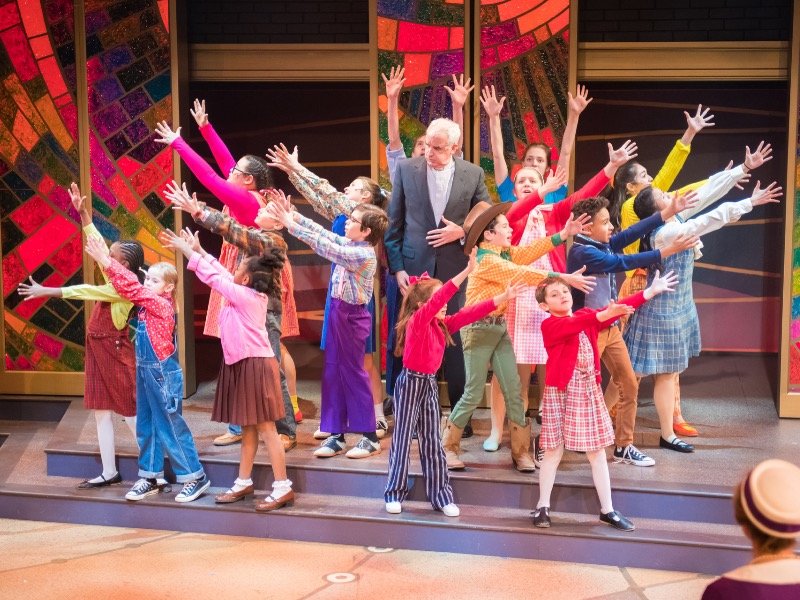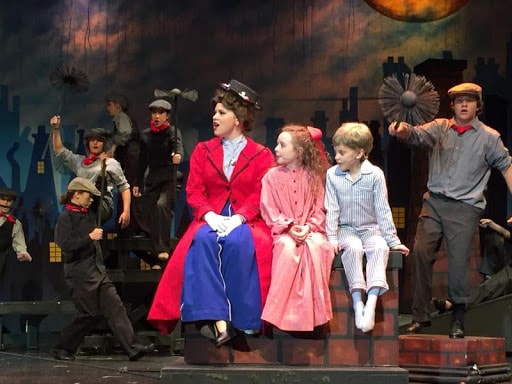
Theatre is an activity that will help children’s ability to relate and their physical development. Through theatre, children are going to be able to lose the shyness that is so characteristic of the youngest and acquire the confidence they need to create personal bonds in their daily lives. Without going any further, we can read the benefits of theatre in children.
In addition, they will learn to move their body, to gesture, to make movements to express sensations and feelings. Therefore, the benefits of this activity will be innumerable. The theatre must be for them like entering a fantastic world, like being able to open a book and enter it, being them the protagonists.
We are going to start by doing vocalization exercises since this is one of the first things children must learn, so that they can be understood later on in acting. The exercise will consist of pronouncing words by lengthening the syllables.
In order for the children to lose their shame, we will work in pairs. We are going to do a mime activity. The facilitator will tell one child in each group to imitate an animal by mimicking it. Since the child cannot make sounds, which would identify the animal quickly, he will have to improvise and make an effort to express through gestures and movements the animal he is representing for those in his group.
Now that the children are more comfortable working among peers and feel more confident, they will do a group activity, where they have to use their imagination. The facilitator will take out an object that can be a ball, a pencil, a box, a headband, etc.

The children will have to invent what that object could be used for in addition to what is usually used. They can pass the object around one by one and each one will provide a different use for that object. This exercise will also bring out more than one smile in the children’s faces.
Let’s keep the laughter going by doing an activity that is very fun, “repetition” games. Several children will volunteer to leave the classroom and one will stay with the facilitator. The others can be spectators and then participate in the same activity. The facilitator will tell the child who has stayed with him/her a story with many details. He or she will tell the story quickly and the child has to be very attentive to keep as many details as possible.
Then another child will enter and the one who has heard the story must tell it to the one who has just entered. There you will see that although he has been attentive to what the monitor said, he will tell the story in his own way, forgetting details and some even making them up.
Then the child who has just heard the story will tell it to the next child who enters and so on until the last child enters. You will see how the story told by the monitor and the one told by the last child have few things in common. This will provoke laughter from those who are witnessing it all and will also make those who are participating have fun.
Let’s play with gestures. The children have to express what the monitor says but only with gestures. The children will have their faces covered with their hands and the facilitator will say, for example, “happiness”, “sadness”, etc., and the child will have to uncover his/her face expressing what the monitor has said.
We cannot forget about music as a way to express feelings. The animator should choose a song that tells a story, where different feelings are expressed, of love, hope, joy, sadness, etc. The children will listen to the music and will have to stage what they hear.
They can be paired up if the song is about love or personal relationships. In this way they will learn to express not only with their face as in the previous exercise but also with their body, as they will be able to sit, stand, lie down or whatever the lyrics of the song suggest to them.
We have mimed, we have staged songs, and now we are going to make sounds. By groups or in a circle facing all the other children. One child will make one sound to all the others, and the others will have to guess what exactly the child wanted to express.
It will be the monitor who will tell him what he has to convey. It can be the sound of an animal, or the noise of an engine, or simply a cry of joy or sadness. This exercise is very interesting because you have to express a lot in a very short time so that others can find out what you want to convey. The children can raise their hands to give an answer and the one who gets it right will be the next one to make the sound.
The time has come for a little play with costumes and make-up. Depending on the age of the children, they will receive either a small script to prepare it, or if they are younger, it will be the monitor who will tell each one what to do and say.
Then it will be time to act it out in front of everyone. There will be energetic applause behind each performance so that the children feel fulfilled and are proud of their work, as well as encouraging others to do so as well.



